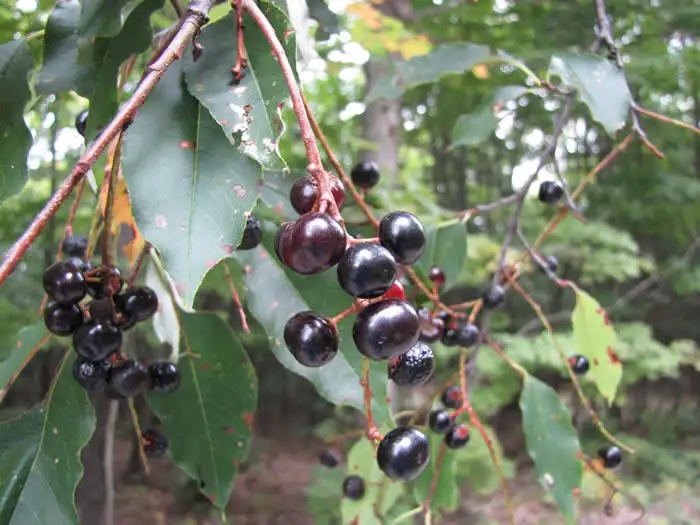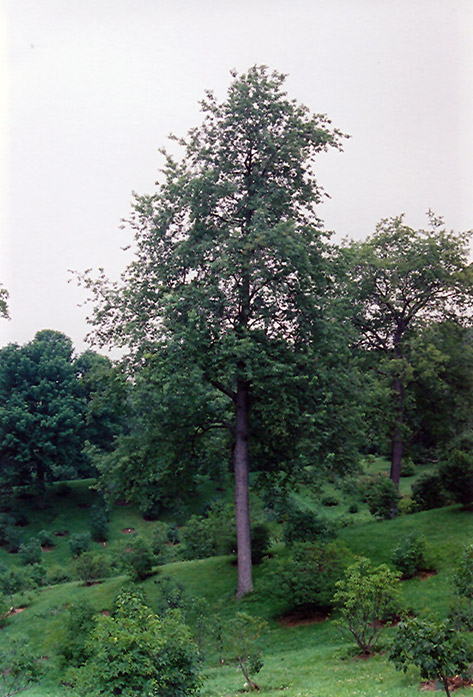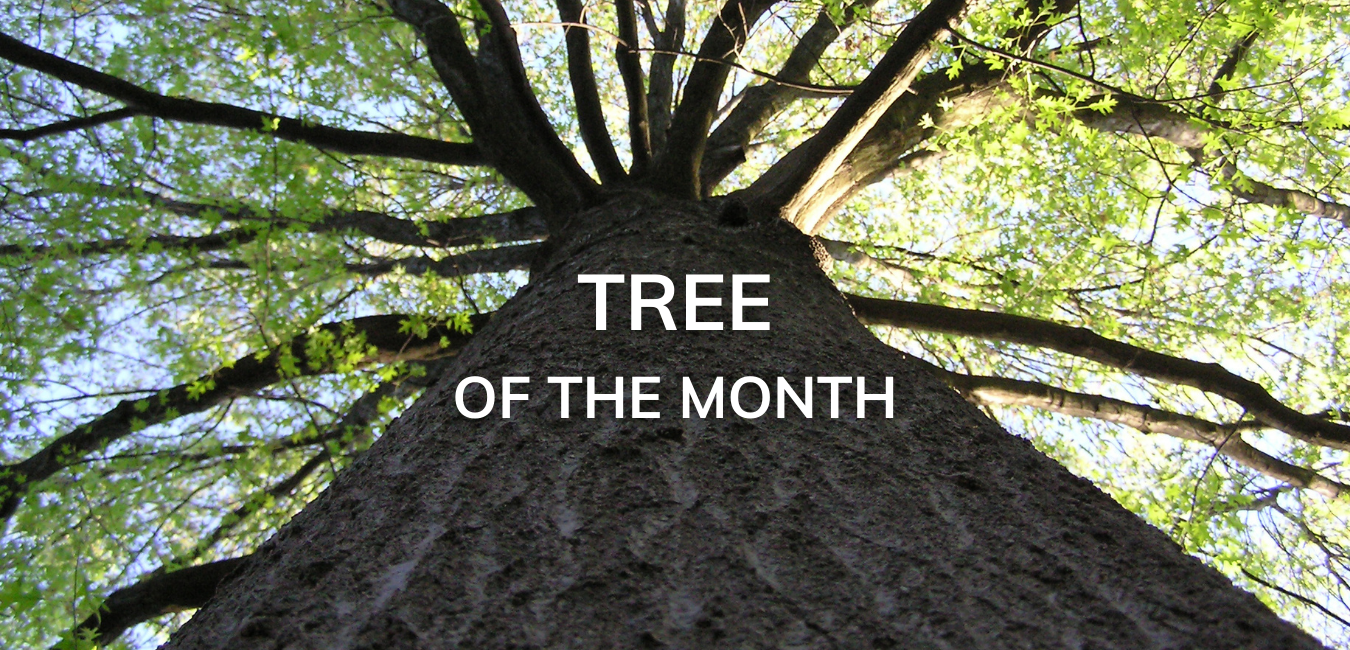
Photo by Chris Earley 
Photo by Connon Nurseries
This deciduous tree grows to a height of about 60 feet with a spread of 40 feet and is found throughout southeastern Canada and into the U.S. At the northern edge of its range, where the climate is cooler and the summers shorter, the black cherry grows to be smaller. In the spring, it has cascades of white flowers which become clusters of small reddish black cherries in the summer, enjoyed by birds and other wildlife. Although the cherries tend to be a bit bitter, they are used to make wine and preserves. Appalachian pioneers used to flavour their rum and brandy with the fruit.
The hard, reddish wood of the black cherry has been highly valued for making furniture down through the years. Early settlers and native cultures used the inner bark and leaves to make tonics of various kinds. Although the cherries can be consumed, all other parts of this tree should be avoided, as chewing the leaves and/or twigs can cause serious injury and even death. This is not a reason to give this lovely tree a wide berth, however; many common trees have leaves, bark and other parts that should never be consumed. The unique oval appearance of the black cherry tree can add interest to any garden or yard. And in the fall, its dark, leathery leaves turn a brilliant orange.
What makes the black cherry tree such an ideal addition to your garden is that it thrives in inner city environments and is highly tolerant of pollution. It should be planted in full sun, with average to moderately moist conditions. It has an average life span of 60 years or more, and is self-pollinating, so it will continue to produce reams of flowers and cherries year after year.
References
https://www.ontario.ca/page/black-cherry;
https://tidcf.nrcan.gc.ca/en/trees/factsheet/60;
http://plants.connon.ca/11100004/Plant/349/Black_Cherry/;
http://wildadirondacks.org/trees-of-the-adirondacks-black-cherry-prunus-serotina.html
Image Sources
Earley, Chris. University of Guelph, Arboretum. “Black Cherry”
Connon Nurseries. “Black Cherry”


